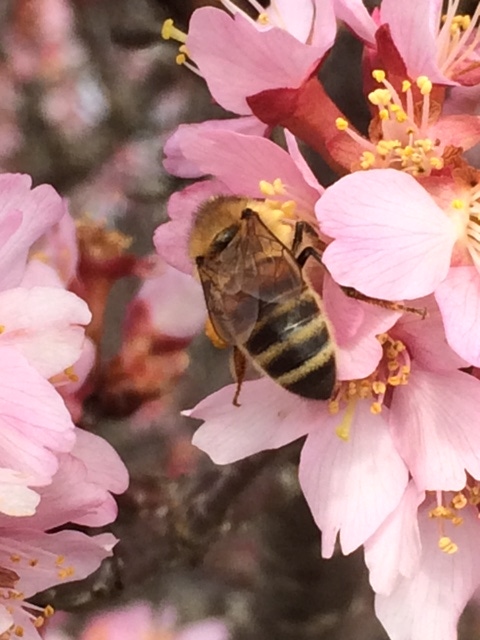November 13, 2017

While the loss of honey bee colonies has slowed in recent times, the honey bee crisis is far from over, according to an apiary inspector with the Texas Apiary Inspection Service (TAIS) administered by Texas A&M University.
"There is a high demand for honey bees in the agricultural industry, [and] as high demand increases, methods must be devised to develop, increase and sustain colonies in the years ahead, and that will require new solutions from the apiary industry," said Mary Reed, one of three apiary inspectors for TAIS and luncheon speaker at the recent the South Texas Farm and Ranch Show in Victoria, held the last week of October. "It will require a lot of work to make that happen."
Reed says TAIS is a state agency administered under AgriLife Research, a part of the Texas A&M University system, and the sole agency responsible for regulating the apiary industry in the state.
BEES VITAL TO AG
"Honey bees are a vital part of the agricultural industry not only in Texas, but nationwide. Pollination by honey bees provides billions of dollars in added value to crops," she told South Texas farmers and ranchers who had gathered in the Victoria Community Center for this year's annual show.
The South Texas Farm and Ranch Show has been a community tradition for the last 35 years, with thousands of people enjoying hundreds of booths and exhibits, educational programs, and an annual golf tournament that supports youth scholarships. About 2,500 farmers and ranchers attended this year's event.
Reed told those gathered for the main luncheon that an increase in demand for honey bee colonies dictates the need to continue to rebuild colonies nationwide. As an example, she pointed out that the million-plus acres of almond trees in California require nearly a million bee colonies for pollination. In the most recent estimate, only about 3 million honey bee colonies exist nationwide she said.
Reed said about half the colonies in the nation travel to the West Coast each winter where they spend 2 to 3 months pollinating the almond trees before moving out of the state to be used in other areas for the annual pollination process.
BEE POPULATION DECLINE
The honey bee population worldwide has been in a serious decline crisis for a number of years and for a number of reasons she said. The main reasons for global bee decline include agricultural pesticides, parasites/pathogens, and climate change. Also, the loss of biodiversity, destruction of habitat, Colony Collapse Disorder, and a lack of forage due to monocultures have been contributors to honey bee and wild pollinator loss worldwide.
The U.S. Environmental Protection Agency (EPA) reports Colony Collapse Disorder is a phenomenon that occurs when the majority of worker bees in a colony disappear and leave behind a queen, plenty of food and a few nurse bees to care for the remaining immature bees and the queen.
While winter losses remain somewhat high, the number of those losses attributed to CCD has dropped from roughly 60 percent of total hives lost in 2008 to 31.1 percent in 2013. Since then, Reed says, honey bee loss has stabilized to a degree, but warns that rebuilding hive colonies is a long and complicated project.
COLONY COLLAPSE DISORDER
Once thought to pose a major long term threat to bees, reported cases of CCD have declined substantially over the last five years. The number of hives that do not survive over the winter months – the overall indicator for bee health – has maintained an average of about 28.7 percent since 2006-2007, but dropped to 23.1 percent for the 2014-2015 winter.
Reed says universities and nonprofits are conducting research to combat honeybee decline worldwide.
"One of my favorite parts of being an inspector is acting as a bridge between researchers and beekeepers," she said. "What our researchers are doing could have an impact on (a beekeeper's) life events."
Reed and others who are working to preserve the health and welfare of honey bees and pollinators say more must be done not only to sustain pollinator populations but also to ensure that agriculture will continue to benefit from the contributions apiary populations provide.
You May Also Like




